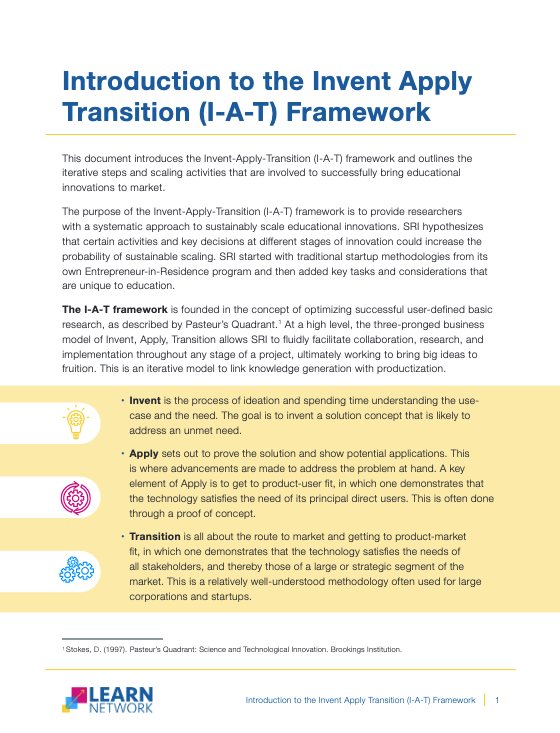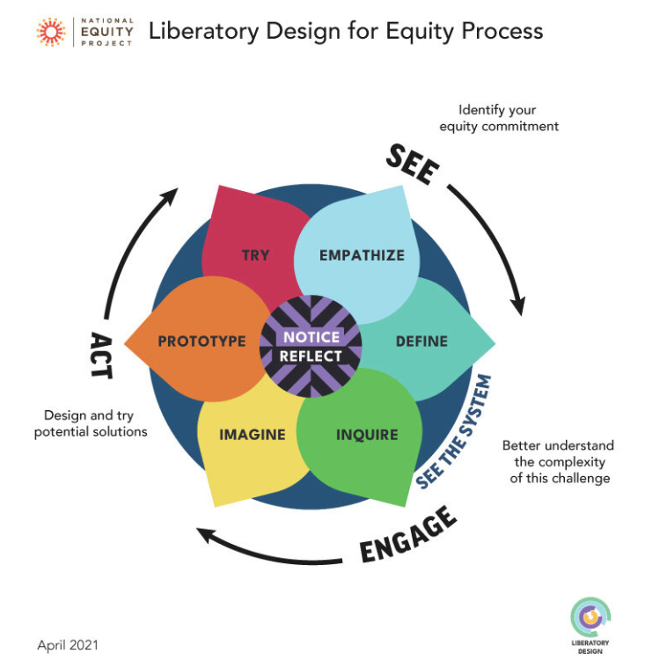One of the central goals of the LEARN Network is to help educational products that already have a strong evidence base achieve scale. Despite strong evidence demonstrating their efficacy in improving learner outcomes, many educational products do not wind up in the hands of educators. A common misconception explaining this phenomenon is that education practitioners (superintendents, curriculum and instruction leaders, and principals) do not prioritize using research-based solutions.
Wondering where to start with the I-A-T framework? Use this introductory breakdown to learn more about the framework and the activities associated with scaling an educational product. This document outlines the iterative steps and scaling activities that are involved to successfully bring educational innovations to market.
Wide use of evidence-based educational innovations has the potential to accelerate learning and enhance outcomes for all learners. However, even when educational products have evidence of effectiveness, they do not often achieve scale. In other words, they are often not broadly adopted by schools and districts.
When designing and scaling evidence-based educational products, it is critical to ensure they are relevant and accessible to the communities they aim to serve, or they might inadvertently cause harm. When creating evidence-based products, designers should gather input from, or sufficiently consider, the people most impacted by problematic practices, policies, funding allocations, and organizational cultures. Without such input, designers miss opportunities to authentically co-create products that support equitable student outcomes and meet user needs.





